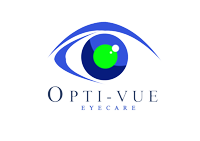Blue Light
BLUE LIGHT
Blue light is the visible light spectrum with the shortest wavelength and highest energy, and similar to [UV] Ultraviolet rays, blue light has both benefits and dangers.
Sources of blue light
Blue light is said to be everywhere i.e. sunlight is the main source of blue light and being outdoors during daylight is where most of us get maximum exposure to blue light.
There are other man made indoor sources of blue light which are:
- Screens of computers
- Electronic notebooks
- Smart phones
- Fluorescent bulbs
- LED lighting and flat screen TVs.
They all emits significant amounts of blue light.
An average Nigerian adult stares at screens more than we sleep and this trend is increasing as we adopt more devices. In fact in many industries and work stations it has become normal for employees to spend their whole working day looking at computer screens and during break these employees will often spend time on their smartphones, and after work many will spend much time of their evening watching TV.
How Does Atmospheric Sunlight Emits Blue light?
The short wavelength, high energy light rays in the blue end of the visible light spectrum scatter more easily than other visible light rays. When they strike air and water molecules in the atmosphere, the higher degree of scattering of these rays makes the cloudless sky look blue.
DAMAGES/SIDE EFFECT OF BLUE LIGHT
- Basically blue light exposure may increase the risk of macular degeneration. Too much exposure to blue light can damage light sensitive cells in the retina which can over time leads to blindness.
- Digital eye strains: prolong exposure to blue light can lead to digital eye strains which leads to asthenopic symptoms. They include:
- Feeling of dryness in the eye
- Redness
- Peppering sensation
- Headaches
- Vertigo
What can be done to prevent effects harmful blue light.
- Limit screen time when you are not working
- Use a blue filter app on your device
- Try not to use your device before bed time
- Blink, blink, b
- link. 20-20-20 rule
- Get regular comprehensive eye examination.
No 5 is very important because it enables your eye care provider to give the best option for protecting your eyes from hazardous blue lights. Since about 80% of us work with computer/phones, it is very important to prevent the risk of harmful blue blue light. These high levels of exposure to blue light from sources can have serious and potential irreversible impacts on our eye health and physical health.
Options for protecting your eyes from blue light.
- The use of anti-blue glasses for computer users (with or without prescription) which cut off 99.9% of harmful blue light emanating from different sources.
- Polarized prescription sunglasses with tints
- Anti-reflecting coatings: reduces the amount of uv/blue light entering the eyes.

